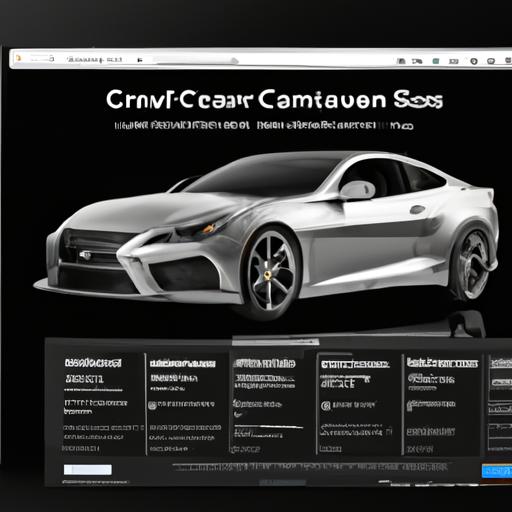Why Cars Are So Expensive: Unraveling the Rising Costs

Introduction
Have you ever wondered why cars these days come with such hefty price tags? It’s no secret that the cost of owning a car has been steadily increasing over the years. From the moment you step into a dealership, you’re met with eye-watering price tags that seem to defy logic. But what exactly is driving this surge in car prices? In this article, we’ll delve into the factors that contribute to the rising costs of automobiles and explore why it’s crucial to understand why cars are so expensive.
The Rising Cost of Cars in Recent Years
In recent times, the price of cars has soared to unprecedented heights. Gone are the days when you could easily find a reliable vehicle that wouldn’t put a dent in your wallet. So, what has caused this upward trajectory? The answer lies in a multitude of factors that influence car prices. From manufacturing and production costs to government regulations and market demand, several elements come together to shape the price tag on that shiny new car.
Importance of Understanding Why Cars Are Expensive
Understanding why cars are expensive goes beyond mere curiosity. It empowers you as a consumer to make informed decisions when purchasing a vehicle. By unraveling the factors behind the inflated prices, you gain valuable insights into the value proposition of different car models. Additionally, comprehending the reasons behind these costs can help you navigate the market and identify potential areas where you can save money without compromising on quality.
In the following sections, we’ll dive deeper into the various factors that influence car prices. From manufacturing and production costs to technological advancements and economic factors, we’ll leave no stone unturned in our quest to unravel the mystery behind why cars have become so expensive in recent years. So, fasten your seatbelts and let’s embark on this journey together!
Factors Influencing Car Prices
A. Manufacturing and Production Costs
When it comes to determining the price of a car, manufacturing and production costs play a significant role. Automakers face various expenses that contribute to the final price tag. Let’s explore some key factors within this realm:
1. Cost of Raw Materials and Components
The cost of raw materials and components used in car manufacturing has a direct impact on the final price. From steel and aluminum for the body to advanced electronics for infotainment systems, each component adds to the overall cost. Fluctuations in the prices of these materials can influence the final price consumers pay.
2. Labor Costs
Skilled labor is crucial in the production process, and the wages and benefits of automotive workers contribute to the cost of cars. The complexity of modern vehicles requires highly trained technicians and engineers, which adds to the overall manufacturing expenses.
3. Research and Development Expenses
Innovation and technological advancements are at the core of the automotive industry. Automakers invest heavily in research and development to improve safety features, fuel efficiency, and overall performance. These expenses are factored into the final price of cars, as manufacturers strive to recoup their investments.
B. Government Regulations and Taxes
Government regulations and taxes also play a significant role in driving up car prices. Here are some key areas where these factors come into play:
1. Safety and Emission Standards
Government regulations mandate strict safety and emission standards that cars must meet. Compliance with these regulations often requires additional engineering, advanced safety features, and emission control systems. The costs associated with meeting these standards are ultimately passed on to consumers.
2. Import and Export Taxes
Import and export taxes imposed by governments can significantly impact the price of cars, especially when vehicles are manufactured in one country and sold in another. Tariffs and duties add to the overall costs, making imported vehicles more expensive for consumers.
3. Registration Fees and Taxes
When purchasing a car, registration fees and taxes imposed by local authorities are an additional expense. These fees vary from region to region, and the amount can vary based on factors such as vehicle type, engine size, and emissions. These costs contribute to the overall price of owning a car.
C. Market Demand and Competition
The dynamics of market demand and competition also influence the pricing of cars. Let’s explore some key aspects within this realm:
1. Supply and Demand Dynamics
The basic principles of supply and demand play a significant role in car pricing. If the demand for a particular model is high and the supply is limited, automakers may increase prices to maximize profitability. On the other hand, a more competitive market with multiple options can drive manufacturers to offer competitive pricing to attract buyers.
2. Brand Reputation and Market Positioning
Brand reputation and market positioning can also impact car prices. Established brands with a strong reputation for quality and reliability often command higher prices based on their perceived value. Luxury brands, for example, leverage their reputation to justify higher price points.
3. Competitive Pricing Strategies
In a highly competitive market, automakers employ various pricing strategies to gain an edge. This can include offering discounts, incentives, and promotions to attract customers. These strategies directly influence the final price consumers pay for a car.
Understanding the multifaceted factors that impact car prices is essential in comprehending why cars have become increasingly expensive. In the following sections, we’ll delve into additional aspects, including technological advancements, economic factors, and regulatory influences, to further unravel this intriguing phenomenon.
Technological Advancements and Features
As we explore the factors behind the skyrocketing prices of cars, it’s impossible to overlook the impact of technological advancements and the incorporation of cutting-edge features. In this section, we’ll delve into how these advancements contribute to the overall cost of cars.
Integration of Advanced Technologies
Modern cars are equipped with an array of advanced technologies that enhance the driving experience and provide convenience, safety, and efficiency. Let’s take a closer look at some of the key areas where these technologies shine.
Infotainment Systems
Gone are the days of basic radios and cassette players. Today’s cars come equipped with sophisticated infotainment systems that offer a plethora of features, including touchscreens, GPS navigation, Bluetooth connectivity, smartphone integration, and even voice recognition. These systems require advanced software, hardware, and integration, all of which add to the cost of manufacturing and, consequently, the price tag of the car.
Safety Features
The focus on safety has led to the integration of numerous advanced safety features in modern cars. From adaptive cruise control and lane-keeping assist to blind spot monitoring and automatic emergency braking, these technologies aim to reduce the risk of accidents and protect both drivers and passengers. However, the research, development, and implementation of these safety features contribute to the overall cost of the vehicle.
Fuel Efficiency Advancements
With increasing concerns about the environment and rising fuel prices, car manufacturers are investing heavily in developing fuel-efficient technologies. These advancements include hybrid and electric powertrains, lightweight materials, aerodynamic designs, and start-stop systems. While these technologies help reduce fuel consumption and emissions, they also come at a higher cost due to the research, development, and integration processes involved.
Research and Development Costs
Behind every technological leap lies extensive research and development efforts. Car manufacturers invest significant resources in conducting tests, prototyping, and refining new technologies and features. These costs are essential to ensure that the technologies meet safety standards, perform reliably, and integrate seamlessly into the overall design. Additionally, protecting intellectual property rights and the expenses associated with integrating and implementing the technologies further contribute to the overall cost of cars.
By understanding the impact of technological advancements and the costs involved, you gain a deeper appreciation for the level of innovation and engineering that goes into the vehicles we see on the roads today. However, it’s important to keep these factors in mind when evaluating the price of a car and determining its value proposition.
Economic Factors
As we continue our exploration into the reasons behind the escalating costs of cars, it’s crucial to examine the impact of economic factors. The economy plays a significant role in determining car prices, and several key aspects come into play. Let’s delve into these economic factors that contribute to the expense of owning a car.
A. Inflation and Currency Fluctuations
Inflation and currency fluctuations have a direct influence on the pricing of cars. When inflation rates rise, the cost of raw materials, labor, and other production expenses also increase. This, in turn, affects the manufacturing and production costs of automobiles. Additionally, currency fluctuations can impact the cost of imported car components, leading to fluctuations in the final price of vehicles.
B. Interest Rates and Financing Options
Interest rates play a crucial role in determining the affordability of cars. When interest rates are high, financing a car becomes more expensive, as you end up paying more in interest over the loan term. On the other hand, lower interest rates make car loans more affordable. Additionally, the availability and terms of financing options can also impact the overall cost of owning a car, as higher interest rates or stricter lending criteria can increase monthly payments and the total cost of the vehicle.
C. Impact of Global Economic Conditions
Global economic conditions can have a ripple effect on the automotive industry. Economic downturns, recessions, or financial crises in major economies can lead to a decrease in consumer spending and demand for cars. To compensate, car manufacturers may need to increase prices to cover their costs and maintain profitability. Moreover, changes in trade policies and international relations can impact the cost of imported car parts and components, further influencing the final price of vehicles.
Understanding these economic factors helps shed light on the broader context within which car prices are determined. By considering inflation, currency fluctuations, interest rates, and global economic conditions, you can gain a more comprehensive perspective on why cars are becoming increasingly expensive. In the next section, we’ll explore the regulatory and environmental factors that also contribute to the rising costs of cars.
Regulatory and Environmental Factors
A. Stricter Emission Standards
In an era where environmental concerns are at the forefront, governments worldwide have implemented stricter emission standards for automobiles. These regulations aim to reduce the harmful impact of vehicle emissions on air quality and climate change. However, complying with these standards comes at a cost. Automakers must invest heavily in research and development to design and manufacture vehicles that meet these stringent requirements. The expenses incurred in developing advanced emission control technologies ultimately contribute to the overall price of cars.
B. Government Incentives for Clean Vehicles
To promote the adoption of cleaner and more sustainable transportation options, governments often offer incentives for purchasing environmentally friendly vehicles. These incentives can take the form of tax credits, rebates, or reduced registration fees. While these incentives may help offset the initial cost of purchasing a clean vehicle, they also indirectly impact the prices of conventional cars. Automakers must compensate for the revenue lost due to these incentives by increasing the prices of non-electric or non-hybrid vehicles.
C. Environmental Sustainability Initiatives
Another factor influencing the cost of cars stems from automakers’ commitment to environmental sustainability. Many companies invest significant resources in adopting eco-friendly practices throughout their manufacturing processes. This includes reducing waste, optimizing energy consumption, and implementing sustainable sourcing methods. While these initiatives undoubtedly have a positive impact on the environment, they also incur additional expenses that are ultimately passed on to consumers.
As governments and societies continue to prioritize environmental sustainability, the regulatory landscape surrounding automobiles is likely to evolve further. Stricter emission standards, government incentives, and sustainability initiatives will continue to shape the automotive industry, influencing the prices of cars in the years to come. By understanding these regulatory and environmental factors, you can gain a deeper appreciation for the costs associated with building and owning a car in today’s world.
Conclusion
In conclusion, the rising cost of cars is a multifaceted issue influenced by various factors. From manufacturing and production costs to government regulations, market demand, and technological advancements, these elements collectively contribute to the high price tags we see today. Understanding why cars are expensive is crucial for consumers to make informed decisions and navigate the complex automotive market.
While the increasing costs may seem daunting, it’s important to remember that they often reflect the value and innovation that come with modern vehicles. Advanced technologies, improved safety features, and environmental considerations all contribute to the overall price. However, it’s equally essential for consumers to assess their needs and budget to ensure they’re making the right purchase.
Looking ahead, the future of car pricing remains uncertain. However, as consumer demand evolves and technologies continue to advance, we may witness new solutions and approaches. As a consumer, staying informed and exploring alternative options like used cars, leasing, or car-sharing services can provide more affordable alternatives without compromising on quality.
Ultimately, understanding why cars are expensive empowers consumers to make educated choices, weigh the benefits against the costs, and find the right balance between their desires and financial capabilities. By taking a holistic approach and considering factors beyond the price tag, you can find a car that meets your needs, aligns with your values, and fits within your budget.
So, the next time you find yourself browsing through car listings or stepping into a dealership, armed with knowledge about the factors driving car prices, you’ll be better equipped to navigate the ever-evolving automotive landscape.
Safe travels!
Conclusion: So above is the Why Cars Are So Expensive: Unraveling the Rising Costs article. Hopefully with this article you can help you in life, always follow and read our good articles on the website: travel.lakeviewinnmn.com




